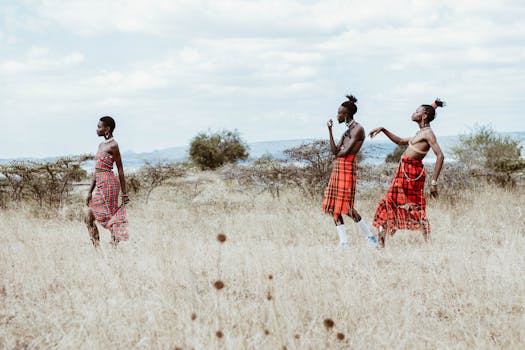
Connecting Cultures: The Story Behind Africa’s Diverse Fiber Traditions – Fiber Optics & Connectivity
Connecting Cultures: The Story Behind Africa’s Diverse Fiber Traditions, the continent of Africa is home to a rich and diverse array of fiber traditions. From the vibrant textiles of West Africa to the intricate basketry of East Africa, each region has its own unique fiber art forms that reflect the local culture and history. In this article, we will explore the story behind Africa’s diverse fiber traditions and how they connect cultures across the continent.
Africa’s fiber traditions are as diverse as the continent itself. In West Africa, countries such as Ghana, Nigeria, and Senegal are known for their vibrant textiles, which are often made using traditional techniques such as weaving, dyeing, and printing. These textiles are not only beautiful but also carry significant cultural and symbolic meaning. For example, the Adinkra cloth of Ghana is a traditional textile that is worn on special occasions and is adorned with symbolic motifs that represent concepts such as wisdom, strength, and community.
In East Africa, countries such as Ethiopia, Kenya, and Tanzania are known for their intricate basketry and weaving traditions. The Maasai people of East Africa, for example, are skilled basket makers who use fibers such as grass, leaves, and papyrus to create beautiful and functional baskets. These baskets are not only used for everyday purposes but also play an important role in Maasai cultural and spiritual practices.
History of Fiber Traditions in Africa
The history of fiber traditions in Africa dates back thousands of years. Archaeological evidence suggests that textiles were being produced in Africa as far back as 3000 BCE. Over time, fiber traditions evolved and spread throughout the continent, with different regions developing their own unique techniques, materials, and motifs.
One of the key factors that has shaped Africa’s fiber traditions is trade. The trans-Saharan trade, which connected West Africa to the Mediterranean region, played a significant role in the development of textile production in West Africa. The trade introduced new materials, techniques, and motifs, which were incorporated into local fiber traditions.
In addition to trade, other factors such as climate, geography, and culture have also influenced the development of fiber traditions in Africa. In areas where cotton is readily available, for example, textile production has tended to focus on cotton. In areas where other fibers such as wool, silk, or raffia are more readily available, textile production has tended to focus on these fibers.
Connecting Cultures through Fiber Traditions
Africa’s diverse fiber traditions are not only a reflection of the continent’s rich cultural heritage but also a means of connecting cultures across the continent. Fiber traditions have played an important role in African cultures for centuries, serving as a means of communication, expression, and identity.
In many African cultures, fiber traditions are used to mark important life events such as birth, initiation, marriage, and death. For example, in some West African cultures, a woman’s status and marital status are indicated by the type of cloth she wears. In other cultures, fiber traditions are used to communicate spiritual and cultural values. The Yoruba people of West Africa, for example, use textiles to represent the gods and goddesses of their pantheon.
Fiber traditions have also played an important role in African cultural and spiritual practices. In some cultures, textiles are used in rituals and ceremonies to connect with the divine. In other cultures, fiber traditions are used to honor the ancestors and to seek their protection and guidance.
Conclusion
In conclusion, Africa’s diverse fiber traditions are a rich and vibrant part of the continent’s cultural heritage. From the vibrant textiles of West Africa to the intricate basketry of East Africa, each region has its own unique fiber art forms that reflect the local culture and history. By exploring the story behind Africa’s diverse fiber traditions, we can gain a deeper understanding of the continent’s rich cultural diversity and the ways in which fiber traditions connect cultures across Africa.
Furthermore, the study of Africa’s fiber traditions can also provide insights into the continent’s history, trade patterns, and cultural exchange. By examining the materials, techniques, and motifs used in fiber traditions, we can learn about the technological, economic, and cultural developments that have shaped the continent over time.
As we move forward in an increasingly globalized world, it is more important than ever to recognize and celebrate the diversity of Africa’s fiber traditions. By doing so, we can promote cross-cultural understanding and exchange, and work towards a more inclusive and equitable world.




